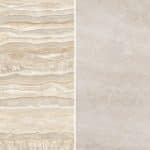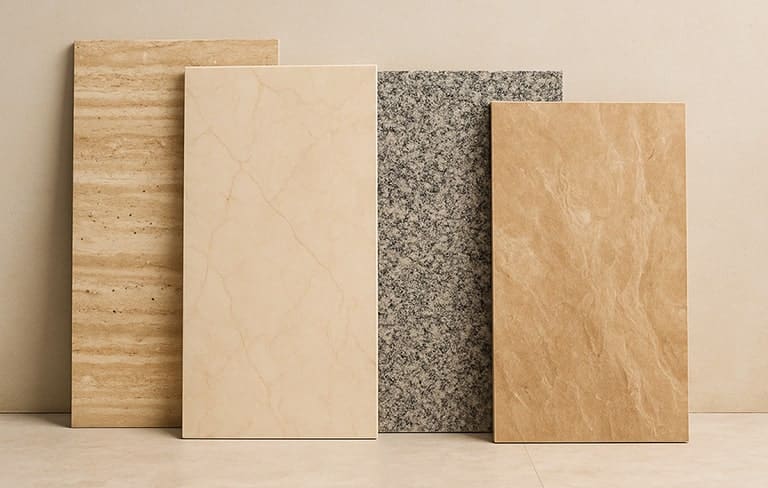
Veined or Non-Veined Stone?
2025-04-05
Advantages and Disadvantages of Travertine Stone: A Smart Choice or a Design Challenge?
2025-04-26The Difference Between Polished and Leathered Stone: Which Is Best for Your Project?
In the world of construction and interior design, the choice of stone finish plays a crucial role in the final appearance and durability of a project. Two of the most popular finishes for building stones are polished and leathered stone. Each of these finishes has its own features, advantages, and specific applications. Understanding the differences between them can help you make a more informed decision. In this article, we will explore the difference between polished and leathered stone and analyze the pros and cons of each.
What Is Polished Stone?
Polished stone is a type of stone that is ground and buffed using special machines until the surface becomes smooth, glossy, and mirror-like. During this process, the surface layers of the stone are removed to reveal a highly reflective finish that enhances the stone’s natural color and pattern.
Advantages of Polished Stone:
- High Gloss: The shiny appearance of polished stone adds a luxurious touch to any space.
- Enhanced Color and Pattern Visibility: The polishing process brings out the vibrant colors and veining of the stone.
- Water Resistance: The smooth surface reduces moisture absorption.
- Easy to Clean: Dust and dirt are easily wiped off due to the non-porous surface.
Disadvantages of Polished Stone:
- High Slipperiness: Especially in wet areas like bathrooms and kitchens.
- Visible Scratches: The glossy surface tends to highlight any scratches.
Common Applications of Polished Stone:
- Flooring in luxurious spaces
- Interior wall cladding
- Countertops and vanities
- Hotel lobbies and commercial buildings
What Is Leathered Stone?
Leathered stone is a finish achieved using specific tools that give the stone a textured, slightly matte surface. This finish resembles the look and feel of leather, giving it its name. Leathered stone offers a unique tactile experience and a more natural look.
Advantages of Leathered Stone:
- Less Slippery: Ideal for high-traffic or wet areas.
- Scratch Resistance: Its textured surface makes scratches less noticeable.
- Natural and Warm Aesthetic: Adds a sense of nature and calmness to the space.
- Unique Texture: The surface feels pleasant and tactile, similar to real leather.
Disadvantages of Leathered Stone:
- Harder to Clean: The textured surface can trap dust and debris.
- Less Shine: Might lack the luster needed for more luxurious aesthetics.
Common Applications of Leathered Stone:
- Kitchens and backsplashes
- Outdoor flooring and terraces
- Decorative walls
- Modern bathrooms
Comparison at a Glance:
| Feature | Polished Stone | Leathered Stone |
|---|---|---|
| Appearance | Glossy and smooth | Matte and textured |
| Scratch Resistance | Lower | Higher |
| Slipperiness | High | Low |
| Color Visibility | Very clear | Natural and muted |
| Ease of Cleaning | Easy | Relatively harder |
Which Stone Finish Is Best for You?
The choice between polished and leathered stone depends on the intended application, personal taste, budget, and environmental conditions. If you’re aiming for a luxurious, glossy look, polished stone is a perfect fit. On the other hand, if you prioritize durability, a natural aesthetic, and a more slip-resistant surface, leathered stone is likely the better option.
Conclusion
When it comes to selecting a stone finish for your project, knowing the differences between polished and leathered finishes is essential. Polished stone offers a shiny and upscale look ideal for interior elegance, while leathered stone provides a durable, natural feel perfect for modern and high-traffic areas. By evaluating your project’s needs and the unique characteristics of each finish, you can choose a stone that meets both functional and aesthetic requirements.




